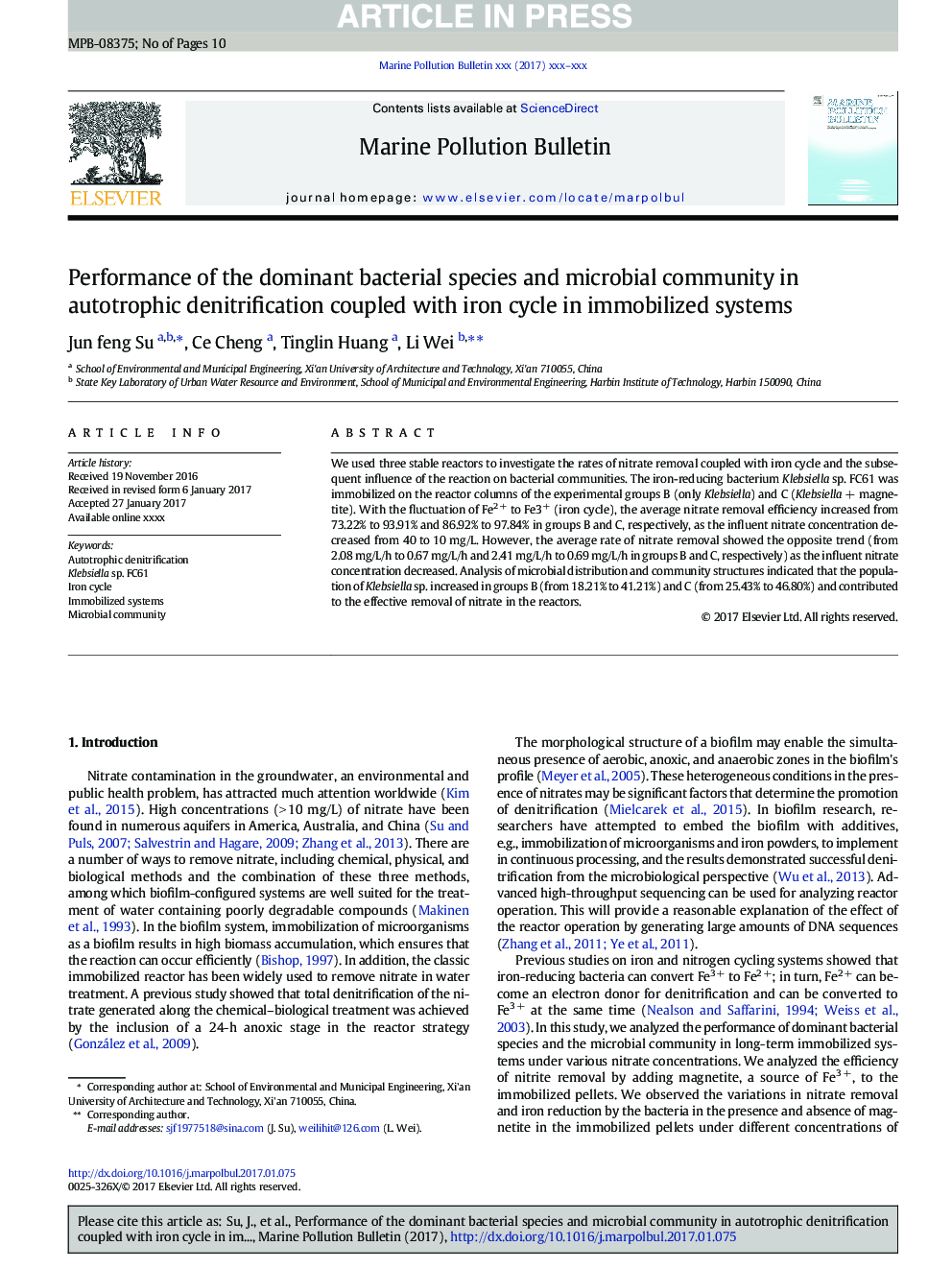| Article ID | Journal | Published Year | Pages | File Type |
|---|---|---|---|---|
| 5757516 | Marine Pollution Bulletin | 2017 | 10 Pages |
Abstract
We used three stable reactors to investigate the rates of nitrate removal coupled with iron cycle and the subsequent influence of the reaction on bacterial communities. The iron-reducing bacterium Klebsiella sp. FC61 was immobilized on the reactor columns of the experimental groups B (only Klebsiella) and C (Klebsiella + magnetite). With the fluctuation of Fe2 + to Fe3+ (iron cycle), the average nitrate removal efficiency increased from 73.22% to 93.91% and 86.92% to 97.84% in groups B and C, respectively, as the influent nitrate concentration decreased from 40 to 10 mg/L. However, the average rate of nitrate removal showed the opposite trend (from 2.08 mg/L/h to 0.67 mg/L/h and 2.41 mg/L/h to 0.69 mg/L/h in groups B and C, respectively) as the influent nitrate concentration decreased. Analysis of microbial distribution and community structures indicated that the population of Klebsiella sp. increased in groups B (from 18.21% to 41.21%) and C (from 25.43% to 46.80%) and contributed to the effective removal of nitrate in the reactors.
Related Topics
Physical Sciences and Engineering
Earth and Planetary Sciences
Oceanography
Authors
Jun feng Su, Ce Cheng, Tinglin Huang, Li Wei,
